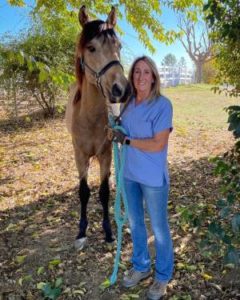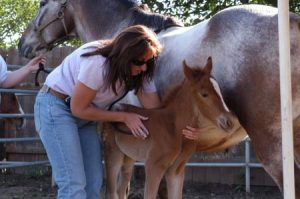
HORSES AND BLISTERING HEAT
Southern California is battling intense summertime temperatures, a lot horse owners are struggling to assist their horses adapt, stay healthy, and stay comfy. When coping with blistering temperatures, The most crucial thing an owner can do is supply the horses with plenty of fresh water. Clean water must always be available; an average horse drinks five to seven gallons of water per day in cool weather condition, while in hot weather condition, demands for maintenance and to compensate for losses in sweat could prompt consumption of 20 gallons or more per day. Adding an electrolyte supplement to your horse’s diet could assist him drinking.
Southern California is battling intense summertime temperatures, a lot horse owners are struggling to assist their horses adapt, stay healthy, and stay comfy. When coping with blistering temperatures, The most crucial thing an owner can do is supply the horses with plenty of fresh water. Clean water must always be available; an average horse drinks five to seven gallons of water per day in cool weather condition, while in hot weather condition, demands for maintenance and to compensate for losses in sweat could prompt consumption of 20 gallons or more per day. Adding an electrolyte supplement to your horse’s diet could assist him drinking.
Insects are additional concern that come with rising temperatures, Hot weather gets insects then do not forget to use fly sheets, insect repellent, and on active insect hours, it can help to bring your horse into the barn and use fans to make airflow that spoils the power of flying insects to linger around your horse,
Having areas to escape the direct sun offers a break, especially if they have air circulation. Also in hot and humid climates your horse could appreciate being hosed down with cool water. One concern numerous horse owners have in blistering temperatures is heat stress, but generally affects horses in hard work instead of those lounging in a pasture .Light riding Is not in all likelihood going to bring on heat stress, unless there is extenuating conditions like extreme heat and humidity and over-riding in extreme heat.
Whenever you think your horse is getting heat stress, take off his tack and equipment, get a rectal temperatures, higher than 103.5°F indicate heat stress. Move the horse out of the sun where possible. At once soak the horse down with cool water, scraping it away repeat- this cooling technique until its chest feels cool to the touch and the rectal temperature drops below 103.5°F. Rapid cooling can lead to muscle cramping. Periodic walks for five to 10 minutes are recommended to allow for the release of heat from inside the horse’s muscles.
With some cautious consideration and aid by their owners, most horses ought to adjust to the warmer temperatures without a great deal of trouble. If you have concerns about how your horse is handling the heat, contact Dr. Garfinkel at 619-659-1180 for assistance.

















